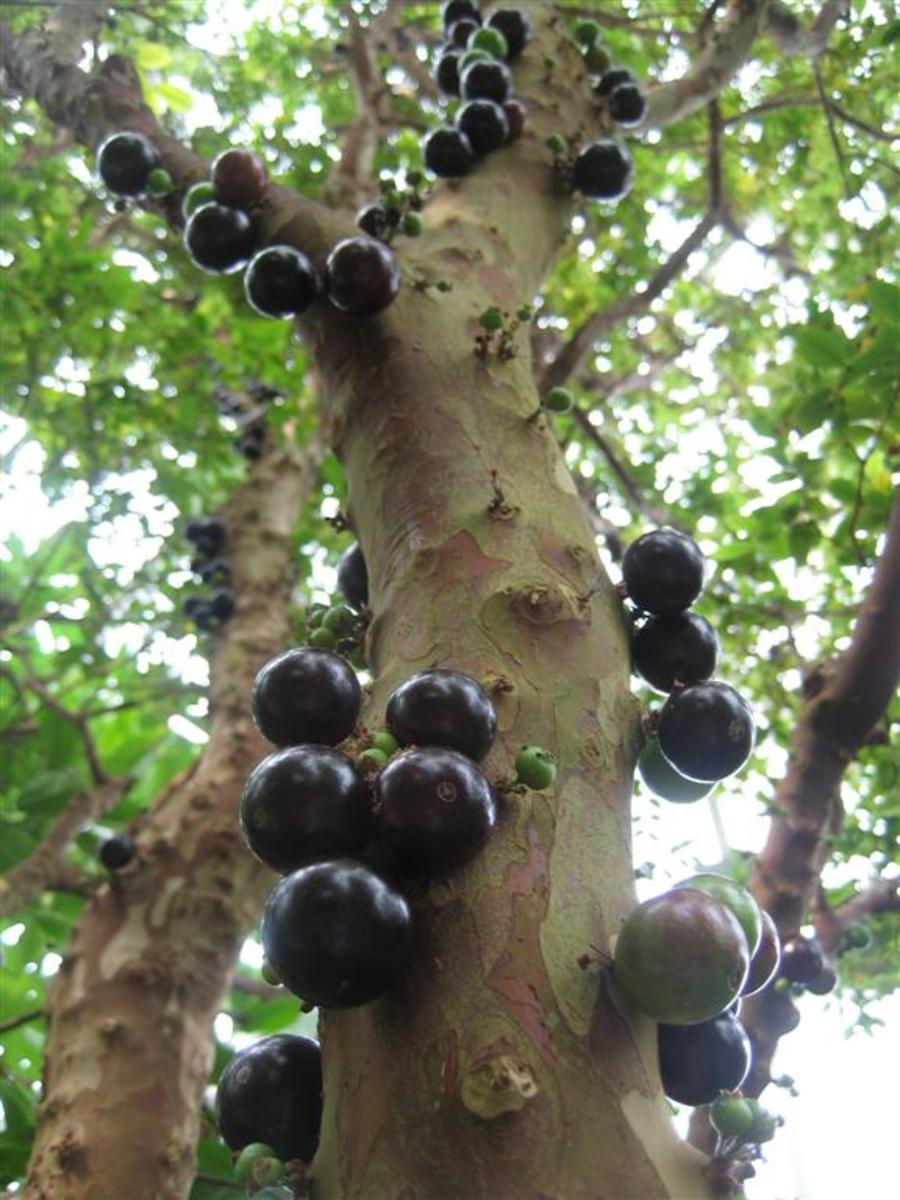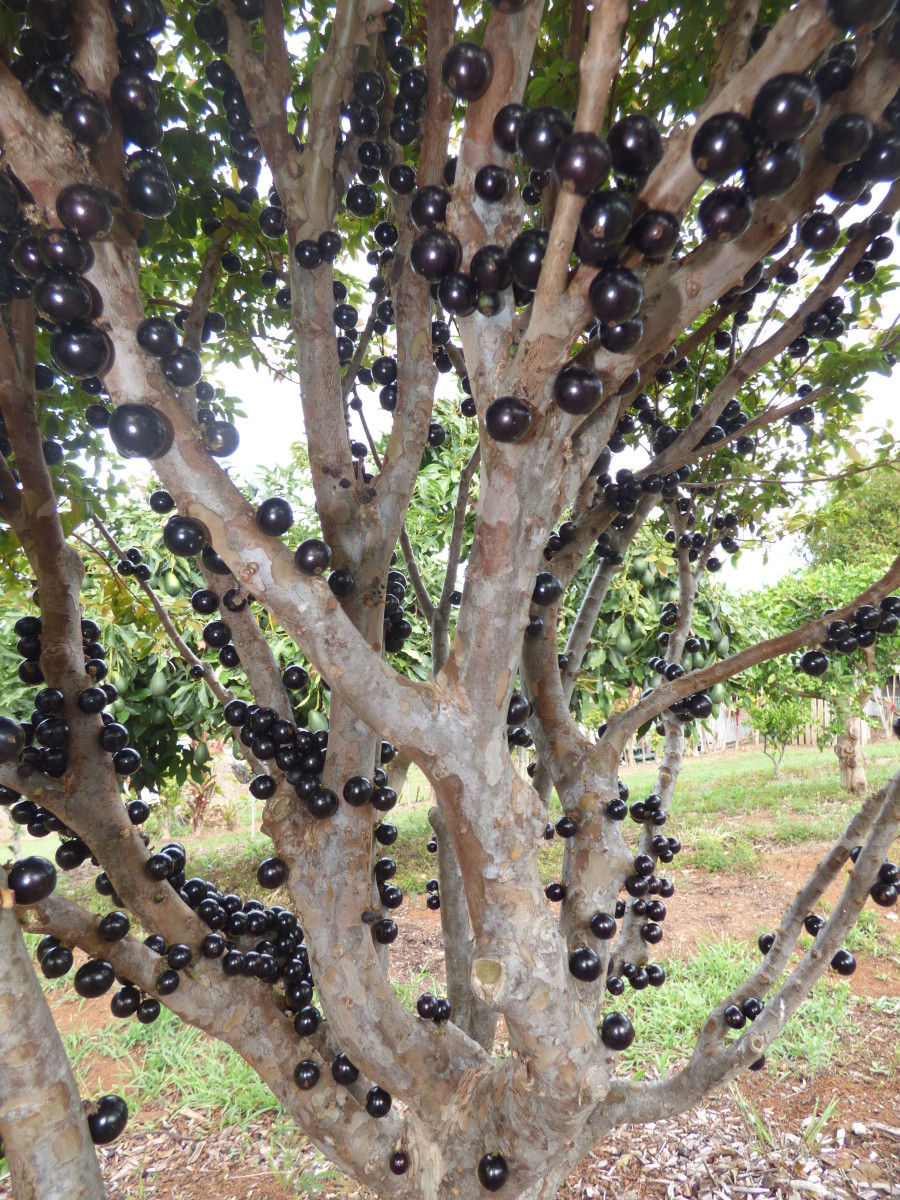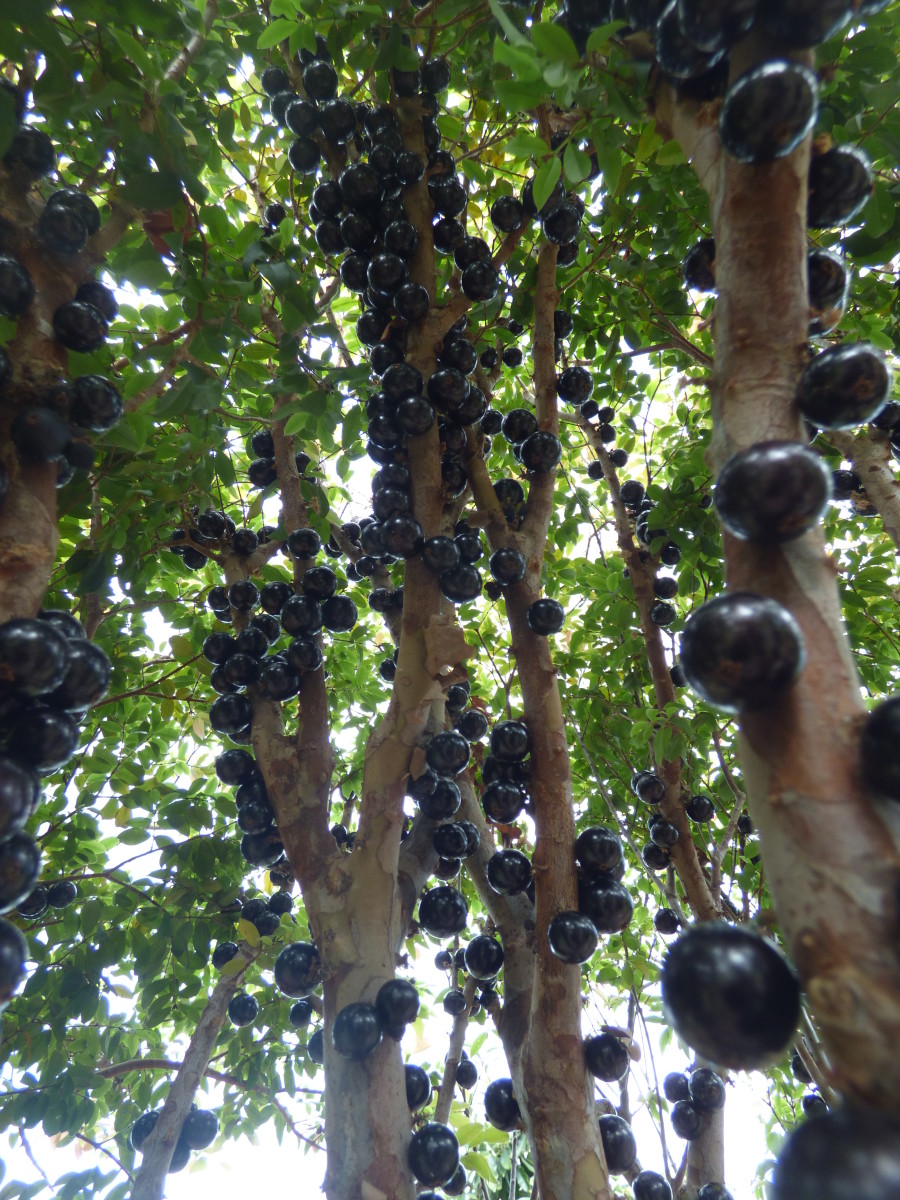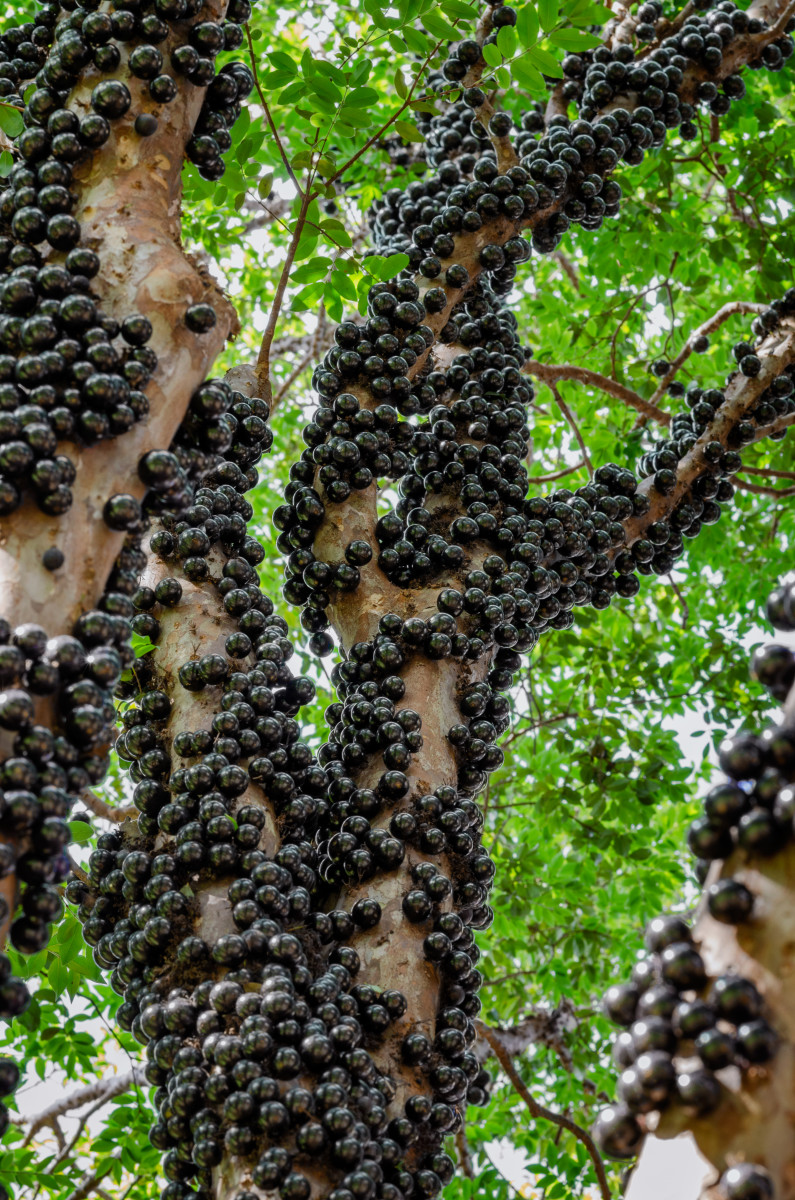On social media, stunning images of the jabuticaba tree from South America have caught the attention of many. While we may be used to seeing apple trees in our backyards, the jabuticaba tree offers something extraordinary. Its fruit, resembling Brazilian grapes, grows directly on the trunk, creating a remarkable sight.

The jabuticaba fruit is versatile, suitable for eating fresh or used in recipes for jellies, jams, juices, and wine. These trees are native to Brazil, particularly in Rio de Janeiro, Goiás, and São Paulo, and related species can also be found in Argentina, Paraguay, Bolivia, and Peru.

The name “jabuticaba” comes from the Tupi words for tortoise (“jaboti”) and place (“caba”), meaning “the place where tortoises are found.” The fruit’s white pulp has led to some calling it “turtle fat” due to its unique appearance. What truly sets these trees apart is how their fruit grows directly on the trunk, sometimes making the tree barely visible under a blanket of fruit.

The jabuticaba’s leaves start salmon-colored and turn green as they mature. When the fruit ripens, it turns from dark purple to black, signaling it’s ready to eat or use for winemaking. Remarkably, the fruit ripens quickly, within 20 to 25 days, making it easy to harvest and enjoy.

Social media users have shared their awe for these trees, with some recalling childhood memories of climbing them and tasting the sweet fruit. The jabuticaba tree not only provides nourishment but also amazes those who encounter it, reminding us of the beauty and diversity of nature. While we might not see such trees locally, their charm continues to inspire admiration and wonder.
Click below to read more…





